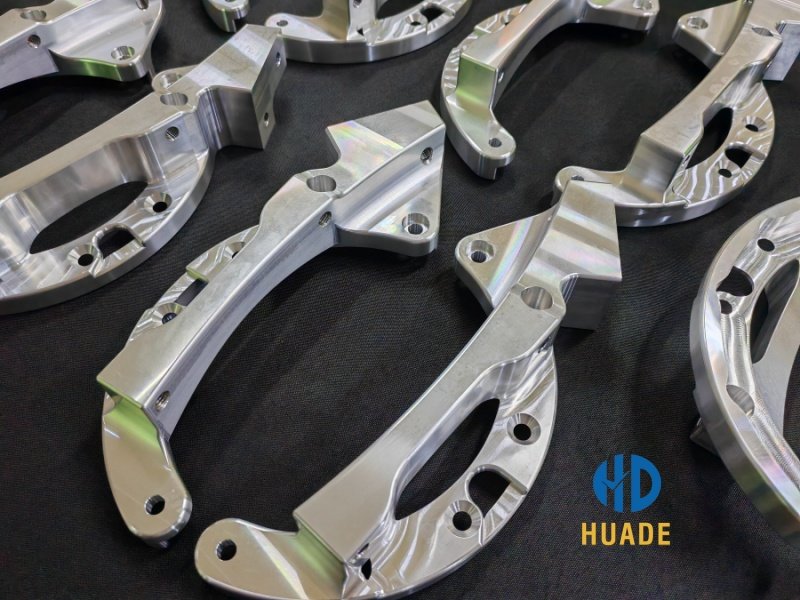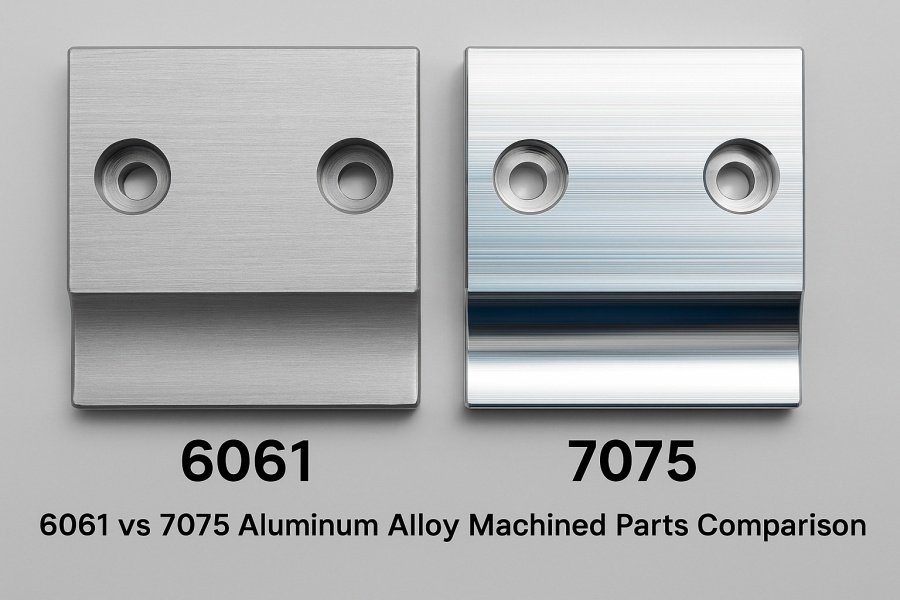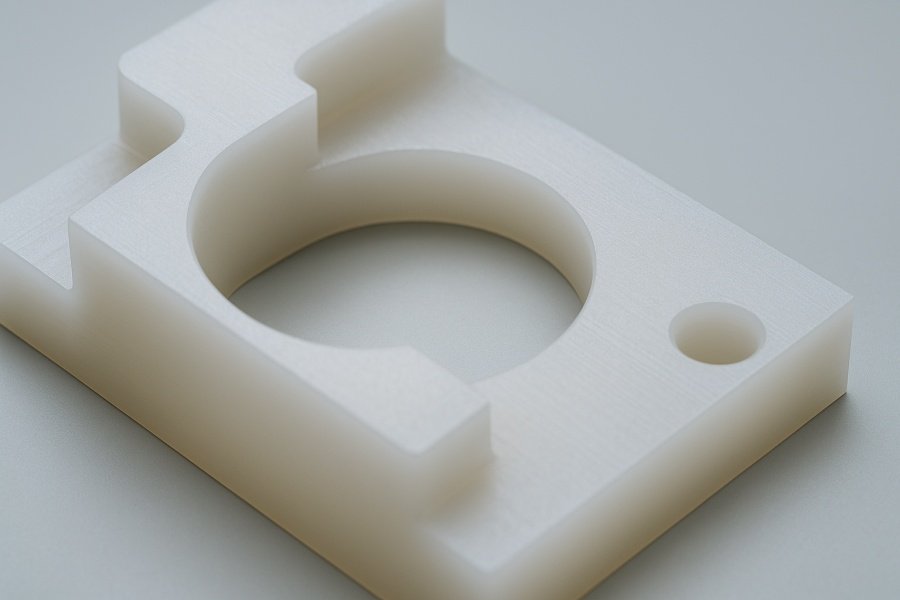
Table of Contents
The moment a design concept moves from a digital file to physical reality, the most critical variable becomes the material. A material’s characteristics—its hardness, thermal conductivity, stiffness, and density—dictate the entire manufacturing strategy, the tooling required, the machine rigidity needed, and ultimately, the cost and performance of the finished part.
Engineers seeking production must possess a nuanced understanding of how material choice impacts the machinability and success of their components, from the industry’s default metals to specialized plastics and hard tool steels.
The Workhorse: Analyzing the Most Common Aluminum Alloy for Machining
Aluminum is the bedrock of rapid prototyping and light-to-medium industrial production, primarily due to its exceptional machinability and favorable strength-to-weight ratio. Within the vast spectrum of alloys, there is a clear champion:
Aluminum 6061 is overwhelmingly the most common aluminum alloy for machining. This popularity is not accidental; it’s a result of a near-perfect balance of properties.
- Excellent Machinability: It cuts cleanly with minimal friction and tool wear, allowing for high feed rates and fast cycle times.
- Weldability and Versatility: Its properties make it suitable for welding and subsequent anodizing, expanding its application from bicycle frames to structural components.
- Cost-Effectiveness: It is widely available, keeping raw material costs relatively low.
However, for high-performance applications where brute strength is required, 7075 Aluminum often takes the stage. While stronger, 7075 presents a greater challenge on the machine floor. Its slightly more abrasive nature and tendency to produce “gummy” chips demand highly specific tooling geometries and strict coolant management to prevent material buildup and maintain tool longevity.

High-Performance Metals: The Trade-Off Between Weight and Workability
When aluminum is insufficient, attention turns to the heavyweight, high-performance alloys—specifically, titanium and stainless steel. Here, a fundamental trade-off emerges: density versus machinability.
A common query in aerospace and medical device design is: is titanium lighter than stainless steel? The answer is a definitive yes, and the difference is substantial.
| Material Property | Titanium (Grade 5/Ti-6Al-4V) | Stainless Steel (304/316) | Machining Challenge |
| Density (approx.) | ≈4.5 g/cm3 | ≈8.0 g/cm3 | Titanium’s low density offers significant weight savings. |
| Thermal Conductivity | Very Low | Moderate | Titanium concentrates heat in the cutting zone, requiring high-pressure coolant. |
| Work Hardening | High | High | Both materials tend to harden during cutting, demanding rigid setups and continuous cutting. |
Titanium Machining Strategy: Due to its low thermal conductivity, heat rapidly builds up at the cutting edge. Successful titanium machining relies on:
- Rigidity: Extremely stiff machine tools and fixtures.
- Low Speed, High Feed: To shear the material rather than rubbing it.
- Coolant: Abundant, high-pressure coolant delivery to flush chips and dissipate heat immediately.
Tackling the Extremes: Hardened Tool Steel and Raw Castings
The spectrum of metal machining is vast, extending from the soft workability of 6061 aluminum to two distinct challenges: the pre-hardened nature of A7 tool steel and the unpredictable geometry of raw castings.
The Rigors of A7 Tool Steel
A7 tool steel is part of the high-carbon, high-chromium air-hardening family, specifically designed for high wear resistance in stamping dies and forming tools. Its inherent hardness—often processed in its final, hardened state—makes it formidable on the machine floor.
- Processing: Traditional roughing is replaced by hard milling, which requires specialized carbide inserts with PVD coatings and extremely rigid 4- or 5-axis machining centers. Material removal rates are necessarily slow to preserve tool life and part integrity.
- The Goal: The aim is often to achieve near-net-shape or final features after the initial heat treatment process, which ensures the dimensional accuracy of the hardened part remains stable.
The Problem of Machining Castings
When dealing with large components, manufacturing often starts with near-net-shape metal castings. While cost-effective for material sourcing, machining castings presents its own unique set of problems that skilled shops must address:
- Inconsistent Stock: The material thickness is rarely uniform, leading to variations in cutting forces.
- Surface Scale and Cracks: The outer layer (scale) is often extremely abrasive and irregular, dramatically reducing tool life.
- Internal Porosity: Voids or defects within the material can be encountered mid-cut, leading to chatter and poor surface finish.
Successful machining castings requires a robust fixturing strategy to dampen vibration, heavy initial cuts to bypass the abrasive outer layer quickly, and careful probing to establish the true position of the raw stock before any material is removed.
The Polymer Side: Machining Specialized Plastics
Materials challenges are not limited to metals. The rising demand for lightweight, insulative, and chemical-resistant components requires mastery of polymers.
Machining polypropylene is a prime example of a polymer that demands a tailored strategy. Polypropylene (PP) is highly durable but poses two main risks during machining:
- Thermal Instability: PP has low thermal conductivity. Cutting heat cannot dissipate quickly, leading to localized melting, gummy residue, and dimensional instability (warping).
- Flexibility: The material is often flexible, making it susceptible to tool pressure deformation, which results in inaccurate cuts and dimensional errors once unclamped.
Successful PP Machining Techniques: Use extremely sharp, polished tools (often non-ferrous specific) and aggressive chip evacuation. The feed rate must be high enough to create a clean shear while the speed must be low enough to prevent thermal buildup.
This sensitivity to heat and pressure extends to other transparent polymers. For instance, the discussion around is acrylic and perspex the same highlights a common market confusion. While chemically similar (both are PMMA), machining these requires slow, precise passes and often vapor polishing to achieve optical clarity, ensuring that internal stresses are not created that would lead to cloudiness or stress cracking later on.

Conclusion: Material Strategy as a Competitive Advantage
The journey from a design brief to a finished, high-performance part is a complex one, navigated by constant material decisions. Whether it involves selecting the ideal most common aluminum alloy for machining for a lightweight bracket, determining the cost/weight trade-off for titanium components, or developing a specialized process for machining castings or polypropylene, the correct choice dictates success.
Relying on a partner with deep, cross-material expertise ensures that the component’s performance characteristics—from the density advantage of titanium over stainless steel to the wear resistance of A7 tool steel—are fully realized on the machine floor, delivering optimal reliability and value.
💬 Ready to discuss your CNC project?
Fill out the form below and our engineering team will get back to you within 24 hours.
